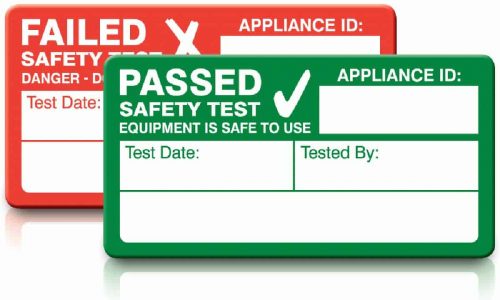Portable Appliance Testing

What is PAT Testing?
Portable appliance testing (PAT) is the term used to describe the examination of electrical appliances and equipment to ensure they are safe to use. Most electrical safety defects can be found by visual examination but some types of defect can only be found by testing. However, it is essential to understand that visual examination is an essential part of the process because some types of electrical safety defect can’t be detected by testing alone.
What sort of appliances need testing?
Any type of equipment, which is powered by electrical energy. The IET Code of Practice for In-Service Inspection and Testing of Electrical Equipment states that this Code of Practice covers portable and fixed equipment appliances. Landlords and HMO owners should note this is recommended to be carried out annually and may be a requirement of your insurance policy or licensing.
Portable Appliances:
An appliance of less than 18 kg in mass that is intended to be moved while in operation or an appliance which can easily be moved from one place to another, e.g. toaster, food mixer, vacuum cleaner, fan heater. Movable Equipment: This is equipment, which is either: 18 kg or less in mass and not fixed, e.g. electric fire, or equipment with wheels, castors or other means to facilitate movement by the operator as required to perform its intended use, e.g. air conditioning unit.
Hand-held Appliances:
This is portable equipment intended to be held in the hand during normal use, e.g.iron.Stationary Equipment or Appliances: This equipment has a mass exceeding 18 kg and is not provided with a carrying handle, e.g. refrigerator, washing machine.
Fixed Equipment/Appliances:
This is equipment of an appliance, which is fastened to a support or otherwise secured in a specified location, e.g. bathroom heater, towel rail. Appliances/Equipment for Building in:This equipment is intended to be installed in a prepared recess such as a cupboard or similar. In general, equipment for building in does not have an enclosure on all sides because on one or more of the sides, additional protection against electric shock is provided by the surroundings e.g. a built-in electric cooker.
Which Legislation does this come under?
- Health and Safety at Work Act of 1974
- The Electricity at Work Regulations of 1989
- The Provision and Use of Work Equipment Regulations of 1998
- The Management of Health and Safety at Work Regulations of 1999
The Government however has put regulations into place that pertain to the maintenance of electrical appliances and the most effective way to ensure that these regulations are met is through PAT testing. The law requires an employer to ensure that their electrical equipment is maintained in order to prevent danger.